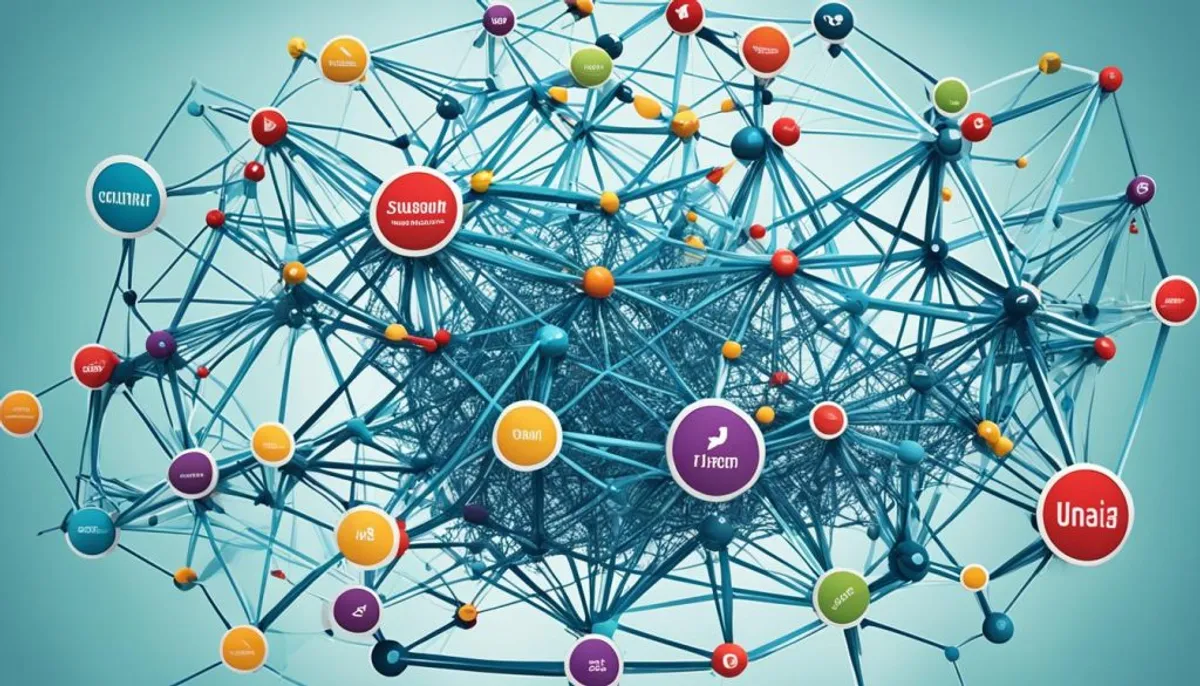Marriage is a key part of human societies, dating back through history. It’s a legal and social bond between two people, often based on love and a promise to stay together. Marriage helps control sexual behavior, makes children’s parents officially recognized, and brings partners together economically and emotionally.
Every society has some form of marriage, even if the details change a lot. Marriage is linked to other important social things like family, religion, government, and the economy. It’s a big part of our social life.

Marriage is crucial for setting social norms and keeping traditions alive. It’s seen as a key to social order, helping create families and pass on cultural and religious values to the next generation.
What is a Social Institution?
In sociology, a social institution is a set of rules and behaviors that help a society work well. These institutions are key to building and keeping our communities together. They offer a safe way for people to interact and meet their basic needs.
Key Characteristics of Social Institutions
Social institutions have some key traits that set them apart:
- Enduring and stable over time – They change but keep their important role in society.
- Serve a purpose or function – Each one has a special job that helps society work better.
- Have defined roles and expectations for individuals – They tell people what is expected of them.
- Are governed by established rules and social norms – They follow rules that guide how people act and work together.
The main social institutions are the family, education, religion, government, and the economy. These institutions are crucial for shaping our social structure, social norms, social roles, and social functions.
| Social Institution | Primary Function |
|---|---|
| Family | Socialization, emotional support, and passing on values |
| Education | Learning new things, sharing culture, and values |
| Religion | Guidance on spiritual matters, moral values, and building community |
| Government | Running the country, making laws, and managing resources |
| Economy | Making, sharing, and using goods and services |

why is marriage a social institution
Marriage is a key social institution that plays a big role in our lives. It helps control sexual behavior and makes having kids okay. It also helps couples work together financially and raise kids in a stable home.
Marriage brings people together, creating strong emotional bonds. It makes couples feel like they belong and rely on each other. Marriage is recognized and expected by society, making it a big deal.
Marriage affects how men and women see their roles and how families are structured. It shapes our daily lives and is a key part of society. Marriage controls sexual behavior, makes kids legitimate, helps with money matters, and builds strong emotional ties. Additionally, adding panels for extra room makes marriage a key part of what holds communities together.

To sum up, marriage is more than just a legal thing. It has many roles, like legal, economic, and social ones. This is why it’s seen as a fundamental social institution worldwide.
Theoretical Perspectives on Marriage
Sociologists look at marriage through different lenses, like the functionalist perspective. They see marriage as crucial for society’s stability and happiness. Marriage helps keep society running smoothly by controlling sexual behavior, creating a safe place for raising kids, and helping partners work together economically.
Functionalist Perspective
Functionalists believe marriage meets basic social needs. These needs include having children, teaching them right from wrong, and offering emotional and practical support. They look at marriage from a big picture view. They see it as linked to important social institutions like the family, religion, and the economy.
The functionalist approach shows how vital marriage is. It keeps social order and helps both people and society as a whole.
Forms and Changing Nature of Marriage
Marriage has changed a lot over time. It now takes many forms across different cultures, highlighting the importance of cultural perspectives on marriage. These changes show how society has shifted. Today, most people marry one person, but some choose polygamy or same-sex marriage.
Changes in marriage are due to globalization, individualization, and new gender roles. These changes affect how people choose partners, share work, and see marriage.
In recent years, more people live together without marrying. They also delay getting married and form different kinds of families. These changes show how marriage is evolving with culture, economy, and population shifts.
| Forms of Marriage | Changing Trends |
|---|---|
|
|
The way we view marriage today shows how it’s adapting to globalization, individualization, and new gender roles. This shows marriage’s flexibility in our changing world.
Conclusion
Marriage has been a key part of human societies for a long time. It’s a union between two people that society recognizes and supports. It helps control sexual behavior, makes having children okay, and brings people together for economic and emotional support.
From a structural-functionalism view, marriage is crucial for society’s stability and happiness. It links closely with other important social groups like family, religion, and the economy.
But marriage has changed a lot in the last few decades. These changes come from things like globalization, people wanting more freedom, and new roles for men and women. These shifts show how marriage is always changing, adapting to the world around us.
Marriage will keep changing as society does. By looking at how marriage works, we can understand more about our social lives and its importance. This helps us see how marriage affects us all, even in places like Saudi Arabia.
RelatedRelated articles



